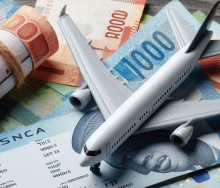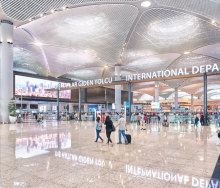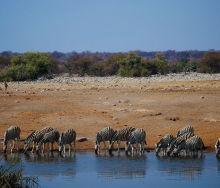Iata has called on the Ethiopian government to act swiftly to maintain the country’s current levels of aviation connectivity.
According to Iata, the government needs to clear the US$95m (R1,75bn) in airline funds currently blocked from repatriation to ensure Addis Ababa’s continued effectivity as a hub and, in so doing, ensure the country’s connectivity is not jeopardised.
Speaking at the Focus Africa Conference in Addis Ababa, Iata DG, Willie Walsh, said the ability to repatriate revenues was guaranteed in international agreements and all parties must abide by these agreements to keep the world connected by air.
Passenger traffic originating from Ethiopia tracked at 19% above pre-crisis levels in the first quarter of 2023, putting the country well ahead of Africa’s overall passenger demand, which stood at 8,7% above pre-crisis levels in the first quarter.
In its post-pandemic recovery phase, Ethiopia’s benchmark regional connectivity (within Africa) stands at 113% of pre-crisis levels according to Iata’s Connectivity Index.
Despite the thriving aviation economy in Ethiopia, the problem of fund repatriation persists.
“The low allocation of USD to the aviation industry by the Ethiopian Government and Central Bank means that $95m in airline funds are blocked in the country. This sends all the wrong signals and puts at risk the economic and social benefits that its global hub supports Ethiopia’s development with. Ethiopia must follow the global rules that it benefits from. It’s time for the government to work with industry to resolve this situation quickly,” said Walsh.
SAF production
Walsh called for full implementation of the Single African Air Travel Market (SAATM), saying this was the solution to unlocking travel in Africa and it would generate significant economic benefits – in Ethiopia alone. it would create 21 000 new jobs and add US$1,9m (R35m) in GDP.
He pointed out the significant role SAF would play in reducing the aviation industry's carbon footprint (aligning with the industry's commitment to achieving nett-zero carbon emissions by 2050).
“To help meet this goal we encourage the Ethiopian government to explore developing and incentivising SAF production. The country has the potential to become one of the biggest SAF producers with unique feedstocks, vast land area, and significant solar potential – thus providing opportunities for both biomass feedstocks and renewable non-biomass feedstocks like solar and wind power-to-liquid (PtL) solutions,” said Walsh.
" Ethiopia’s aviation industry is set to triple by 2040, with an average 6% growth in passenger traffic over the next 17 years. The Ethiopian government is uniquely positioned to stimulate SAF production, a move that would not only support the forecast surge in air travel but also trigger substantial job creation and boost the local economy. Ethiopia has the opportunity to take the lead and, in doing so, construct an aviation future that is as sustainable as it is successful," said Walsh.
















